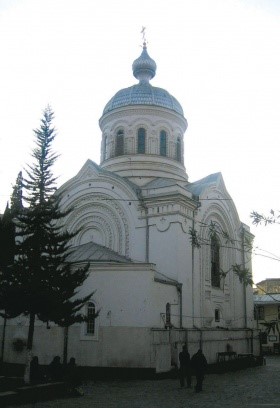Didube Church of the Nativity of Mary

Didube Church of the Nativity of Mary is an architectural monument in Tbilisi.
It is located on Tsereteli Avenue (north of the Didube Pantheon), presumably on the site of the church dedicated to Queen Tamar, which was destroyed and rebuilt many times during its centuries-old existence. The only early source that hints at this fact is the account preserved by the author of “ისტორიანი და აზმანი შარავანდედთანი” about the wedding of Queen Tamar. Although, the chroniclers do not say anything directly about the church in Didube, the very fact of the existence of the king's royal palace in Didube and the wedding being held there makes us think that a court church must have stood near the palace.
In 1800, Lieutenant Chuiko left an inscription — “Destroyed Church”, on the plan of Tbilisi, beyond the village of Kukia, near Didube. Without a doubt, it is the Didube Church of the Nativity of Mary. Its restoration work began after the village of Didube was annexed to the city (1850s).
Deacon David Gambashidze wrote: “... The church in Didube was built of brick in the name of the Virgin Mary. The legend says that when Tamar's mother, Queen Burdukhan, was seriously ill, King George made a vow to God to build a church in Didube if the queen would get better. The queen got better, and King George built a palace and a church on this site... At first it didn't have a dome, but now it has a beautiful dome and the church adorns the Didube area...”
Of the tomb inscriptions preserved today in the Didube Church, the most important is the one that revels the identity of the builder of the new church. The inscription is written in Georgian and Russian, on the southern wall of the church, on the right side of the entrance, near the altar. An inscription in Georgian on one of the marble slabs of the floor appears to be of earlier period: “Here lies the body of the deacon Besarion Zedgenidze, the builder of this church...” The present-day church was built in 1884 (architect A. Chizhov), in the same way that was common in all Russian churches — it was devoid of artistic value. In 1979–1988, the church was painted by A. Bandzeladze (restored in 2007).
T. Beridze


